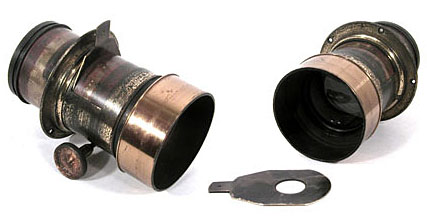Waterhouse stop on:
[Wikipedia]
[Google]
[Amazon]
 The Waterhouse stop or Waterhouse diaphragm is an interchangeable
The Waterhouse stop or Waterhouse diaphragm is an interchangeable Kickstarter, The Lomography Daguerreotype Achromat 2.9/64 Art Lens
/ref>
 The Waterhouse stop or Waterhouse diaphragm is an interchangeable
The Waterhouse stop or Waterhouse diaphragm is an interchangeable diaphragm
Diaphragm may refer to:
Anatomy
* Thoracic diaphragm, a thin sheet of muscle between the thorax and the abdomen
* Pelvic diaphragm or pelvic floor, a pelvic structure
* Urogenital diaphragm or triangular ligament, a pelvic structure
Other
* Diap ...
with an aperture
In optics, an aperture is a hole or an opening through which light travels. More specifically, the aperture and focal length of an optical system determine the cone angle of a bundle of rays that come to a focus in the image plane.
An ...
(hole) for controlling the entry of light into a camera
A camera is an optical instrument that can capture an image. Most cameras can capture 2D images, with some more advanced models being able to capture 3D images. At a basic level, most cameras consist of sealed boxes (the camera body), with ...
. A thin piece of metal (the diaphragm) is drilled with a hole (the aperture); a set of these with varying hole sizes makes up a set of Waterhouse stops, corresponding to what today we call f-stops or f-number
In optics, the f-number of an optical system such as a camera lens is the ratio of the system's focal length to the diameter of the entrance pupil ("clear aperture").Smith, Warren ''Modern Optical Engineering'', 4th Ed., 2007 McGraw-Hill Pro ...
s. Photographic lens
A camera lens (also known as photographic lens or photographic objective) is an optical lens or assembly of lenses used in conjunction with a camera body and mechanism to make images of objects either on photographic film or on other media capab ...
makers provided slots in lens barrels for the insertion of the chosen stop.
This apparatus was invented by the pioneering 19th-century photographer John Waterhouse of Halifax in 1858. It has also been reported to have been independently invented by Mr. H. R. Smyth, and described by Waterhouse as early as 1856. The innovation was quickly put to use due to its convenience: "Aperture openings were at first controlled by unscrewing the lens and inserting stops of the appropriate size between the lens components, though after 1858 photographers used the more convenient Waterhouse stops which eliminated unscrewing the components."
Alternatively, one or more pieces of metal would be drilled with various sized holes. The stop could then be chosen by sliding the diaphragm to different positions in the lens slot. Such multi-aperture diaphragms were also sometimes referred to as Waterhouse stops, due to their operation based on sliding through a slot in the lens barrel.
Waterhouse stops were also used in photographic enlargers in the darkroom
A darkroom is used to process photographic film, to make prints and to carry out other associated tasks. It is a room that can be made completely dark to allow the processing of the light-sensitive photographic materials, including film and ph ...
.
Today, Waterhouse stops are largely obsolete; most modern photographic lens
A camera lens (also known as photographic lens or photographic objective) is an optical lens or assembly of lenses used in conjunction with a camera body and mechanism to make images of objects either on photographic film or on other media capab ...
es are made with an iris diaphragm
In optics, a diaphragm is a thin opaque structure with an opening (aperture) at its center. The role of the diaphragm is to ''stop'' the passage of light, except for the light passing through the ''aperture''. Thus it is also called a stop (an ...
. Some compact digital cameras use 2-hole diaphragms for limited aperture control. One modern device that still uses interchangeable stops is the Lensbaby. Others are a new Petzval lens
Joseph Petzval (6 January 1807 – 17 September 1891) was a mathematician, inventor, and physicist best known for his work in optics. He was born in the town of Szepesbéla in the Kingdom of Hungary (in German: Zipser Bela, now Spišská Belá in ...
and an achromat lens being crowdfunded
Crowdfunding is the practice of funding a project or venture by raising money from a large number of people, typically via the internet. Crowdfunding is a form of crowdsourcing and alternative finance. In 2015, over was raised worldwide by crow ...
by Lomography
A toy camera is a simple, inexpensive film camera.
Despite the name, toy cameras are fully functional and capable of taking photographs, though with optical aberrations due to the limitations of their simple lenses. From the 1990s onward, ther ...
.,/ref>
References